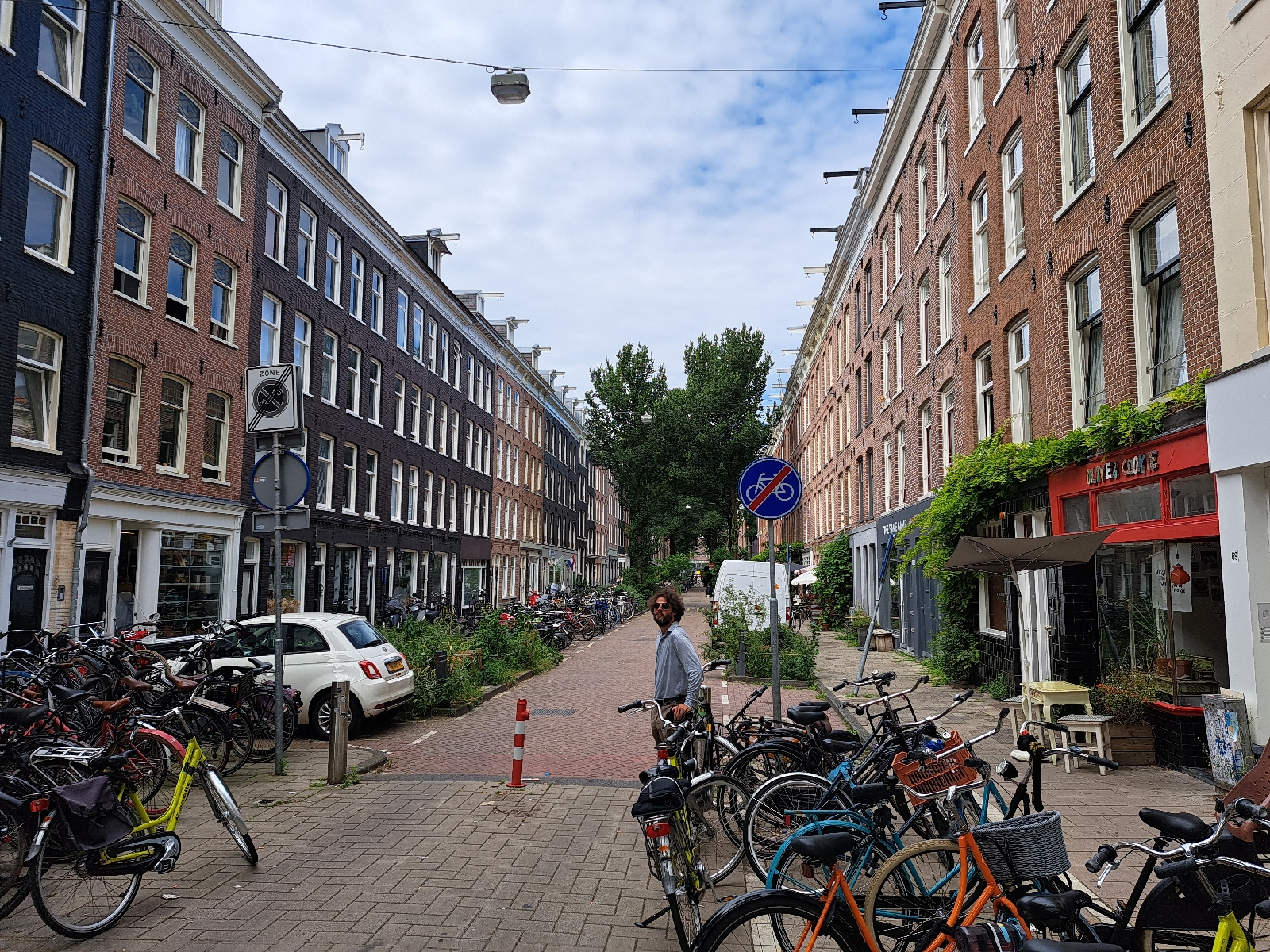Keep on going to Nijmegen (Day 16 Netherlands)
We headed out of the EuroParc to meet in the immediately adjacent tiny town of Linden with Sjors van Duren. He works for Royal Haskoning DHV on a regional network of bikeways between towns. This network has had many campaign names. It's been called a bike super highway, a bike highway, and finally, simply, Keep On Going.
Sjors took us on a bike path tour, explaining the communication side of planning--aka the politics. Something Connie had mentioned too in Odense, though different set of things in this context of multiple municipalities. Many of the topics discussed boiled down to communication and power.
For example, we crossed a terrible highway crossing. It's not great for people walking, biking, or even driving to try to cross this road. It's particularly bad for walking or biking as it's an important thruway for freight trucks. As in the US, freight/shipping groups have a lot of influence--aka power. The planners couldn't afford to build a bridge or tunnel with the money for that project, so they engineers did what they could to make the intersection as less-dangerous as possible.
We continued on, crossed a walking/biking only bridge. The combination of repair budget processes (whoever find the bridge support flaw pays into fixing the whole thing even if it's not their pylon) and political power (rail companies) resulted in building the new bridge. The old rail bridge remained untouched, serving only trains. Sometimes, working around a power dispute means literally building bridges.
We pedalled through another small town persuaded to go along with the bike plans, in part, by *not* calling it a bike highway. The other part was using a different pavement color and narrowing it somewhat so as not to need to take land. A regional network affects locals throughout the network, not just the destinations. Working with the concerns of the local towns people, understanding what values mattered to them, allowed the planners to partner rather than run over concerns with brute political power.
Similarly, we went through a neighborhood where bikes have right of way, but other types of transport are allowed. One really cool aspect of planning for bike safety over car speed is that it results in tighter turning radii for corners. We watched a big truck (a flat nosed semi truck) turn at this bike 4-way but car 3-way intersection without squashing us or the plants! (Fire trucks are right-sized here, so that's not a problem at all.) Traffic engineers wield power through design policies and guidelines for things like turning radii, so this exemplifies how truly prioritizing safety in design can be accomplished by getting engineers on board.
Making a regional network inherently requires connecting destinations. Making a regional bike network requires thinking about human movements. Back in ye olden days, people got around on foot or hoof (aka riding an animal or on a cart pulled by an animal). When they planned the rural connections between towns, they used old existing paths. This resulted in the routes aligned with the minimal effort for getting between two places. In a place this old, this meant we rode on a forest path was on an old Roman road.
We quickly reached Nijmegen proper via the Keep One Going network. In city, whether a street had separated paths or shared space correlated with which mode of transportation received priority. In neighborhoods, it's bikes, but a slow area managed cars and our group on bikes just fine. Yes, car users have political power. In the Netherlands, however, nearly every car driver is also bikes as regular activity to simply get things done. The political power to create streets comfortable and convenient to cycle while designating some roads as prioritizing cars results in transportation planning that works better for everyone.
The tour ended on the bridge over the River Waal. It's a major transportation route for Europe with a long history due to the benefits such a transportation asset brings. I felt completely safe on the bike part of the bridge. Sure, my shoe somehow got caught on my bike and I slowly ran into a fence when trying to head back, but the good design meant that I didn't tip over the edge or other true catastrophe.
I tried going back to our holiday home by memory, made it through a good portion of Nijmegen, but then missed the street(s) to reach the forest path. I had a surprisingly pleasant ride on a separated bike path next to major arterials (small highways). I arrived safe, sound, and ready to sleep.
Next up: EuroParc, an incomplete study
Random pic of the day: Rammstein fans hours early for their concert in the park.














Comments
Post a Comment